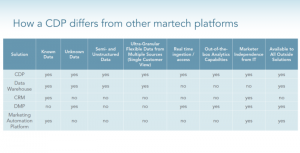Many companies are ready to go all-in with artificial intelligence. In fact, spending on AI systems will increase by 31% this year, reaching $ 49.2 billion.
This technology promises to shift the way we live and work, whether it helps us manage our lives, takes the reins with transportation, or even combats pandemics such as COVID-19. So far, though, AI’s use cases mostly revolve around natural language processing — or NLP — and prediction. AI can help translators or journalists do their work more efficiently, for example, and advertisers and retailers can use machine learning to place the right advertisements or product promotions.
These uses represent only the beginning of AI adoption, though, and forward-thinking managers need to understand what’s next — and how to prepare for it.
Staying Ahead of Technology
The next phase of AI will bring bigger changes to employee workflows and task management. (After all, every job has tasks that involve prediction.) With the help of AI, those predictive tasks can be automated with increasing accuracy.
This doesn’t mean that an employee will be out of work because more of her job can now be automated. It does, however, mean that her judgment skills will be more valuable than her predictive ones. In other words, AI can’t tell this employee what she should do — it can only help her see the potential outcomes. It’s up to her to best judge the data and predictions and make sound decisions.
Managers who want to stay ahead of (or even capitalize on) these AI-driven trends can start doing three things today:
1. Get comfortable with AI. You don’t have to be an expert in programming AI to put it to good use. However, you do need to understand what AI actually is — cheap prediction — and how you could potentially use it to solve problems.
Companies such as Microsoft and Google are already creating user-friendly AI tools, meaning their users won’t be bogged down by complex code. Instead, users can employ critical-thinking skills and their understanding of the technology to identify tasks that could be completed more efficiently with predictive tools.
On the other hand, it’s important to emphasize that you shouldn’t blindly embrace emerging technologies; doing so could invite chaos into your business when people don’t know how their jobs integrate with machines.
Think through the areas of your business that would benefit most from AI. What are the high-stakes problems and pain points your team faces? Identify those, then explore the possible solutions AI and predictive technologies can offer.
2. Examine workflows and challenges more closely. It’s not all that difficult to predict the next jobs AI-driven technology will disrupt: If you think about jobs on two spectrums — from predictable to unpredictable and involving a high or low degree of human interaction — it’s easy to see where automation will likely take over next.
You might start this process at the managerial level. Managers do best when they look at the business workflows and challenges their teams face today and consider what they could do to improve them tomorrow. These managers look for business decisions in which a small change can significantly impact results.
Managers need to think “forward” and imagine what some automation or a new predictive capacity might add to your team’s abilities. They can start by looking at roles within the company that involve a lot of repetitive, predictable tasks. Those jobs are likely to benefit from some automation, especially if they don’t involve much human touch. Knowing that will help them forecast changes and plan accordingly.
3. Identify areas where AI doesn’t fit. Certain jobs simply shouldn’t be automated. For instance, taking a patient’s blood pressure might seem like a great process to automate. It would be easy, cheap, and efficient for a machine to grab those vitals rather than a human. In that moment, however, people want another human present.
When you’re considering AI applications, always ask whether most people would prefer to interact with a human in that instance. If so, AI might not be the best option.
If anything else, remember that AI will shape companies for years to come. The managers who are best prepared for its impact will ensure it paves the pathway toward success.
To learn more about how you can get ahead of the digital disruption facing your industry, download my company’s whitepaper, “The 3 Principles of Digital Disruption”.
Business & Finance Articles on Business 2 Community
(53)



